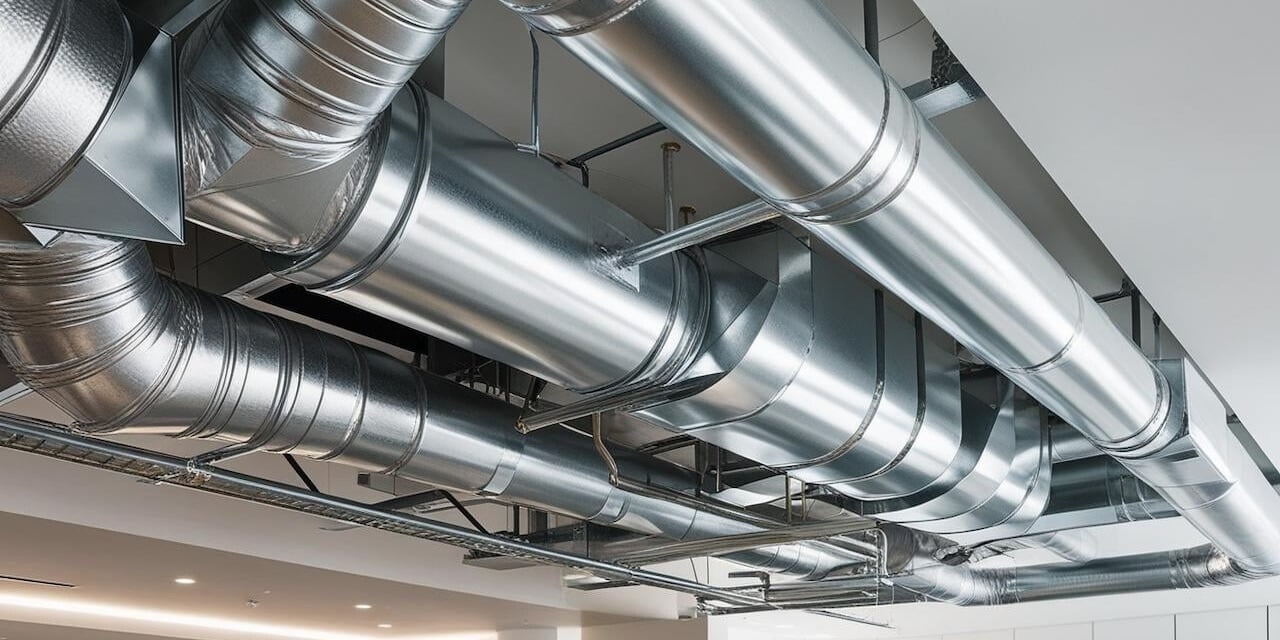Newsletter
In 2022, the workforce is more concerned than ever with health, safety, and wellbeing. And with companies returning to offices and the hiring market heating up, employers can no longer afford to ignore these concerns.
If you're exploring ways to enhance your workplace experience through improved indoor air quality, you'll want to read our FREE comprehensive guide  . Learn how IAQ data can be leveraged to elevate workplace performance, alleviate employee concerns, and drive better business outcomes.
. Learn how IAQ data can be leveraged to elevate workplace performance, alleviate employee concerns, and drive better business outcomes.
Companies that understand and apply healthy building principles can ensure a confident return to in-person work in a post-COVID world, increase employee satisfaction and retention, and most importantly - minimize potential health hazards and sick building syndrome.
In this guide, we’ll cover key concepts in healthy buildings, and explain how to start turning your facility into a healthy building by focusing on monitoring and improving indoor air quality.
The Ultimate Guide to Healthy Buildings and IAQ
1. What is a Healthy Building?
2. The Benefits of Healthy Buildings
3. How to Make the Business Case
What is a Healthy Building?
A healthy building is a commercial, residential, or public building which is designed in ways that promote the health, safety, and wellbeing of its inhabitants. Healthy buildings combine principles and insights from the fields of engineering, construction, medicine, and psychology, in order to improve the indoor environments in which people spend most of their waking hours.
Green vs healthy buildings: Architects, city planners, and engineers have been concerned with green or sustainable buildings since the 1970s, often as a reaction to rising energy prices. But while green buildings focus on the way buildings interact with their environments, in recent years there has been a growing interest in understanding and improving indoor environments within buildings as well. This has shifted the focus from green to healthy buildings.
With almost 90% of our time spent in buildings, it’s now clear that the air that we breathe, the water we drink, and the amount of physical activity we get in these spaces can dramatically improve our lives. Healthy buildings promote the health, safety, and wellbeing of occupants by improving these and other elements, which we will cover in the next section.
What Makes a Building Healthy?
Healthy buildings can encompass a broad range of design patterns - from fundamental health and safety measures to dedicated yoga and meditation rooms. However, in the oft-cited 9 Foundations of a Healthy Building (PDF), researchers from the Harvard T.H. Chan School of Public Health highlight 9 key areas to focus on:
9 Foundations of a Healthy Building
- Ventilation: Bringing fresh air from the outside into the building, typically through HVAC systems.
- Air quality: The presence and abundance of harmful agents, including particulate matter, volatile organic compounds (VOC), and carbon dioxide (CO2).
- Water quality: Contamination and decline in tap water quality due to deterioration in water infrastructure.
- Thermal health: The combination of thermal conditions that affect the occupants’ sense of comfort, mainly temperature and relative humidity.
- Dust and pests: Dust accumulates in office environments as people are constantly entering them from the outdoors, and pests such as dust mites can often carry unwanted allergens.
- Lighting and views: Providing natural daylight in addition to artificial lighting and avoiding dimly lit spaces.
- Noise: Harmfully high levels of noise can be generated by HVAC and other systems, office equipment, vacuuming, or even conversations between occupants.
- Moisture: Plumbing leaks, condensation, poorly maintained drain pans, and outdoor conditions can direct water into the building.
- Safety and security: Maintaining a safe and hazard-free working environment through design choices and staff training.
Read our full summary of the nine healthy building foundations.
The Benefits of Healthy Buildings for Businesses
While much of the last few years’ discourse around healthy buildings has centered on public buildings such as schools, the field also has a lot to say about commercial properties. There are many steps that facility managers or HR departments can take to promote healthy building best practices - as long as they have buy-in from senior executives.
Employee wellbeing is doubtless a lofty goal, but it also requires time and money that can be difficult for companies to allocate. It’s important to be aware of the benefits of healthy buildings and to weigh them against the true cost of the status quo: unhealthy buildings lead to lost productivity, frequent employee churn, and reputational damage.
4 Ways to Make the Business Case for Healthy Buildings
- Costs of absenteeism and presenteeism: Employees getting ill at the office, and subsequently being forced to lose work, is bad for everyone - employees, employers and the broader economy. According to a survey of 94000 workers across 14 industries in the US, the annual cost of lost productivity due to absenteeism reached a whopping $84 billion.
- Productivity gains: Improving the indoor environment has been shown to increase employee output and productivity. Poor air quality negatively impacts cognitive skills (as we elaborate below), while noise and lack of natural light can also lead to poor performance at work. By removing these barriers, healthy buildings generate net value for companies.
- Employee morale and retention: In the wake of the COVID-19 pandemic, employees have become more health-conscious; many may still be apprehensive about a return to the office. A willingness to invest in promoting their health and wellbeing will go a long way towards ensuring that employees stay motivated and value your company as an employer, rather than pursue other opportunities. These policies can also help attract new talent as the job market heats up and competition over skilled workers gets more intense.
- Improved return on real-estate investment: Improving health conditions in your building and gaining relevant certifications (such as WELL) can be a powerful tool to increase tenant satisfaction. As an employer or a building owner, this will help you get the most value out of your investment in commercial real-estate and reduce churn.
Learn more about the ROI of indoor air quality.
Not Sure Where to Start? Go With Indoor Air Quality
As we’ve covered above, there are many different ways you can embark on the journey to healthy buildings - from ventilation to water quality to noise. But from our experience, the best place to start would be with indoor air quality (IAQ). Here’s why:
Indoor air quality has a larger impact on employee satisfaction than other factors.
Improving IAQ can provide better ‘bang for your buck’ compared to other healthy building optimizations. A study conducted in the Netherlands, in which 70% of a company’s workforce was relocated to a different building with better perceived environmental conditions, found that improvement in air quality had the largest effect on reducing employee dissatisfaction (you can read the full study here).
Indoor air quality can help get employees back in the office.
In a recent survey, 82% of millennial workers reported that they would feel safer returning to the office if they would receive timely and transparent IAQ data. Many are understandably still apprehensive of spending prolonged time in enclosed office buildings in the wake of the devastating impact of the COVID-19 pandemic; taking steps to reduce airborne transmission of viruses will make the return to offices easier for these employees.
The cost savings are substantial.
We’ve already mentioned the staggering costs of absenteeism due to illness. Since many viruses and pathogens are airborne, improvement in air quality plays a significant factor in reducing these. But there are additional costs to poor IAQ: exposure to pollutants can impede cognitive functions and decision-making capabilities, negatively impacting productivity. A 2015 study (summarized here) by Harvard assistant professor Joseph Allen estimated that the productivity benefits of improving air quality through ventilation are around $6,500 per person per year.
Key Considerations for Indoor Air Quality
To understand how you can improve IAQ, you should start by considering the factors that can affect it. Some of the main causes for poor IAQ that you should be measuring include:
- Particulate matter (PM2.5 and PM10): solid particles and liquid droplets - including larger ones such as dust and smoke, as well as microscopic ones that can’t be detected by the naked eye. These could be very detrimental to the health of building occupants.
- Volatile organic compounds (VOCs): gases such as ethylene glycol and formaldehyde, which are often found in an office environment can contribute to both short-term and long-term conditions, including sick building syndrome. VOCs could also cause unpleasant odors which hurt productivity and employee perceptions of their workplace.
- Carbon dioxide: Exposure to elevated levels of CO2 can induce a broad range of negative health symptoms - including fatigue, drowsiness, and headaches. They can also induce a general feeling of ‘stuffiness’ or the air being heavy, and hurt productivity.
- Thermal comfort: Temperature and relative humidity have been shown to have a large impact on the subjective satisfaction of building occupants with their environment, and corresponds to their overall level of comfort.
Choosing Effective Strategies to Improve Indoor Air Quality
There are many ways to improve IAQ in an office building, and some might be more applicable than others in your particular space. Opening windows sounds like a no-brainer, but for an office located on the 57th floor, it isn’t always safe and simple to do so.
Invest in Real-Time Air Quality Monitoring
If you can’t measure it, you can’t improve it.
- Peter Drucker
Peter Drucker's famous quote stands true for IAQ. The first step towards any kind of solution is understanding the scope of the problem. For this purpose, you should look into air quality monitoring technology that can give you a good reading on different factors that affect IAQ, including PM2.5 & PM10, TVOC, CO2, temperature, and relative humidity. Monitoring will help you understand both the scale of the problem and your progress towards solving it over time.
Some key strategies you can use to improve air quality are:
Monitor Air Quality Continuously
Rather than relying on periodic spot testing, continuous air quality monitoring will help you understand both the true scale of the problem and your progress towards solving it over time. Once you have the data, you can pinpoint the areas or times of day when air quality needs to be improved, and then take steps to do so.
Learn more about choosing commercial air monitors.
Evaluate and Improve Your HVAC Performance
Fresh air is key to improving indoor air quality. In some offices, it’s possible to increase natural ventilation through vents and windows, while others need to rely on mechanical means. Modern HVAC units can help by bringing fresh air into the building as well as moderating temperature to prevent moisture from accumulating.
It is important to conduct periodic HVAC audits to ensure systems are working properly and to maximize energy efficiency. Degradation in air quality can hint at issues with HVAC systems, which further highlights the need to continuously monitor IAQ.
Learn more about indoor air quality and HVAC systems.
Promote Collaboration Between Facility Managers and Business Stakeholders
A healthy building requires building owners, site managers, HR departments, and facility managers to work together to ensure that best practices are maintained over time, that hygiene standards are maintained, and that IAQ is being considered when dealing with issues such as pest control. Establishing procedures, sharing air quality data, and maintaining regular communication channels can all help identify and address problems when they’re still small enough to handle.
Install Better Filtration and UV Lighting to Combat Viruses
As we’ve covered in a previous guide, high-efficiency air filters (MERV 13 / HEPA) can help remove some virus particles from the air circulating in the building. Investing in a UV light purifier can also help eliminate viruses through germicidal irradiation, which is relevant for COVID-19 as well as other microbes, including molds and bacteria.
Additional Tactics and Resources
If you’d like to get more inspiration for how to improve IAQ in your buildings, you can read about the top indoor air quality strategies for healthy buildings, or listen to a recent podcast with Kaiterra CEO Liam Bates on Matt Morley’s podcast:
Closing: Healthy Buildings Are a Journey, but Every Journey Starts With One Small Step
Our understanding of healthy buildings is evolving rapidly. Facility managers, HR departments, and senior stakeholders need to align in order to ensure that employees’ wellbeing is prioritized and avoid operational disruptions
Within the wider context of healthy buildings, the importance of indoor air quality cannot be overstated - both as a key contributor to preventing illness and absenteeism, and as a means to increase employee satisfaction, reduce churn, and drive productivity gains.
Ready to take the first step towards better indoor air quality in your facilities?
You’re in luck - we’re offering a free, no-strings-attached consultation with our air quality experts. Click below to schedule a quick chat to understand how you can implement better air quality monitoring and the expected benefits you can expect to see:
Kaiterra provides air quality monitors and an IAQ analytics dashboard for healthy buildings and offices, helping workplace leaders and healthy building pioneers assess and improve their indoor air quality. Our indoor air quality monitors like the Sensedge and the Sensedge Mini can be found in many of the world’s most iconic buildings and workplaces, such as the Empire State Building and the Burj Khalifa.






.png?width=200&height=148&name=Menu%20C%20(2).png)

.png?width=307&height=228&name=Menu%20-%20D%20(1).png)
.png)





